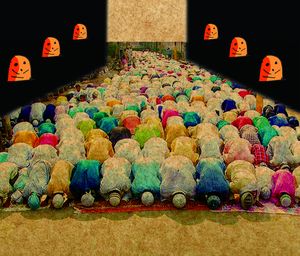The Jharkhand government’s decision to designate a prayer room in the new assembly building for Muslim legislators, employees and visitors has drawn protests from BJP members who demand that either the order be withdrawn or a separate room be provided for believers of Hinduism and other faiths. The speaker has defended the decision saying it was a practice that existed even when the young state was part of Bihar. There is also demand that a temple be built on the premises, though there are many deities in the state, which has a mix of tribal and non-tribal population.
Such protests and demands have been common in the country since pre-independence days as competitiveness has surged and ebbed. There have been heated debates on whether the concept of secularism means separation of state from religion, or that all religions must be given equal rights or that the specific rights of majority and minority religions should be enforced. Institutions of the government and different leaders have resolved these issues right from the national capital to small towns.
Exemplarily, the Army has built multi-faith complexes in its units across the country. Military discipline also contributes to orderly prayers, but without such rigour, it could become more chaotic in civilian life. Administrators and police officials have, over the years, narrated how they have faced and resolved conflicting and potentially inflammatory demands to permit (or to deny) worship in public places. Even the courts are approached to either force or stop the government from taking decisions that would benefit one group or another.
While prime minister Jawaharlal Nehru believed in keeping state and religion separate, he had to accommodate the believers in his government who felt religion was an integral part of national life. The practice of multi-faith prayers, especially when new government buildings were inaugurated, became more prevalent in the initial decades of independent India. But now the prevalent trend is for Hindu priests to conduct pujas, as was witnessed when the prime minister laid the foundation for the new Parliament building.
In fact, the present circular building—it will soon become a museum after the new building starts functioning in 2023—has been a witness to the pulls and pressures of worship since it functioned as the Central legislative assembly under British rule. There were Christian prayers for the good of the king and empire which Indian members attended, depending on their loyalty and religiosity. There were no separate prayer rooms as places of worship for Hindus, Muslims, Christians and Sikhs were available around the complex.
The building had dining halls for British and Indian members, as well as for Indian kings and nawabs who had a separate princes’ chamber—the present-day members’ reading room, where the original copy of the Constitution is kept. Depending on the dietary preferences and taboos, specific meats were allowed or disallowed on the menu. There were also bars, where members and officials could have a quick drink amid the hustle and bustle of the debates, similar to the parliament in London. After independence, the bars were closed and more dietary restrictions were imposed. There are demands that only vegetarian food be served in the new Parliament building and in BJP-ruled states. Politicians who shout the most are also good at reconciliations. In Jharkhand, the speaker and political leaders need to sit together in a fraternal spirit.
sachi@theweek.in


